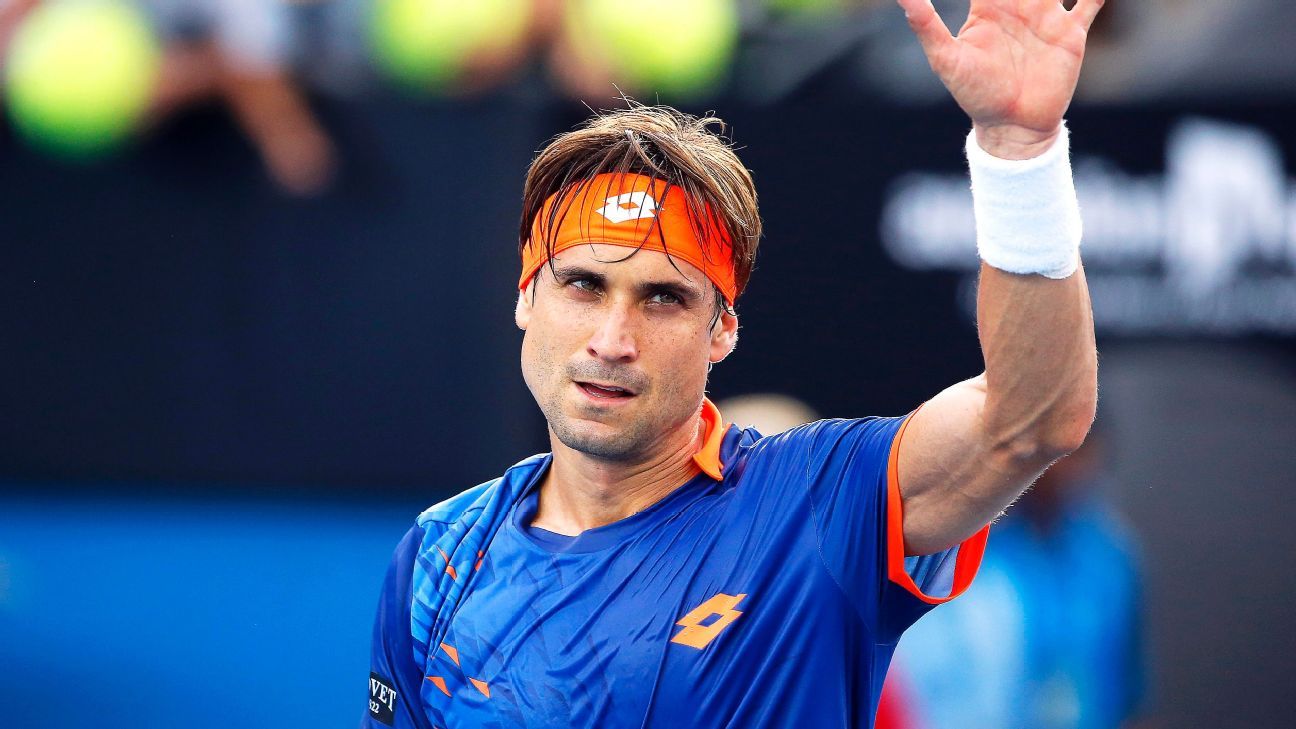It’s time to say farewell to the little four.
For more than a decade, the quartet — David Ferrer, Tomas Berdych, Jo-Wilfried Tsonga and Richard Gasquet — struggled in the long shadows cast by the iconic champions of our time. They were nearly as consistent as the vaunted Big Four, locking down places in the top 10 for years on end. They combined to win 61 singles titles, hoisted the Davis Cup, attracted legions of devoted fans, but … they did not account for a single Grand Slam singles title among them, compared to 54 major trophies for Roger Federer (20), Rafael Nadal (17), Novak Djokovic (14) and Andy Murray (3).
It’s unlikely the drought will be broken. Age and injury, the toll of serving as a de facto firewall between the Big Four and everyone else have all caught up. These men formed the spear point of a frustrated generation that also included mercurial Gael Monfils, Bunyanesque Robin Soderling and fleet Gilles Simon. Now it seems to be over and filling out the top 10 will be up for grabs in 2019.
Ferrer, 36 years old, is ranked No. 126 and was last seen struggling in Challenger events in October. Berdych and Tsonga, both 33, missed most of last year with injury (Berdych had a bad back, Tsonga underwent knee surgery in April) and are ranked Nos. 71 and 257, respectively. Gasquet had his hands full this year trying to stay in the top 25 — and almost made it. He finished 2018 ranked No. 26.
“To me, they’re more the ‘Unlucky, Consistent Four,'” ESPN tennis analyst Brad Gilbert said. “It’s probably over for Ferrer, but the others should be able to play at least a few more years. But getting back into the top 10 is going to be a huge hurdle. It’s not impossible, but it’s a big ask.”
Fate has been cruel to these men. Marin Cilic and Stan Wawrinka, neither who was as consistent as a Ferrer, or Berdych, each won Grand Slam titles. True, three of the little four had their chances in major finals, but each time, a member of the Big Four intervened. Tsonga’s brilliant breakout at the 2008 Australian Open was ruined by that other first-time major finalist at the time, Djokovic. Ferrer was beaten in the 2013 French Open final by the King of Clay, Rafael Nadal. It was also Nadal who halted Berdych’s march through the field at Wimbledon in 2010.
Matter of fact, Berdych beat Federer and Djokovic at Wimbledon that year. “But the hardest thing always for those guys was to beat two or even three of the Big Four in the same event,” Gilbert said. “It was very discouraging.”
These players all had shortcomings as well, although the appetite for hard work and admirable diligence were not among them. Ferrer was the most successful, earning 27 titles and a career-high ranking of No. 4. He said last year that the US Open was likely his last major, but who knows.
Ferrer’s peers, impressed by his tenacity and stamina, nicknamed him “the Little Beast.” But as he barely stretched the tape to 5-foot-9, he lacked a knockout punch. It was never more evident than in his matches with his bigger, stronger, more explosive friend and fellow countryman, Nadal.
Berdych, who won only one Masters Series title (and that was 15 years ago, at the 2005 Paris Masters) to go along with his Wimbledon runner-up trophy, has most of the tools required for success these days. He’s a mobile 6-5 with rock-solid groundstrokes and a punishing serve that he rode to a year-end ranking of either No. 6 or 7 for six consecutive years ending in 2015. A conservative baseliner, he relied on power, but he was predictable, unwilling to experiment with angles or to improve his attacking game.
Tsonga also is eager to resume play in 2019. He’s blessed with a talent for making big statements, but never able to string them together. He never duplicated his breakthrough in 2008, despite having plenty of chances. “All those [little four] guys had a little less in their games than the Big Four, except maybe for Tsonga,” Gilbert said. “He’d hit the highest level of them all, but he had trouble sustaining it.”
A charismatic showman, Tsonga had trouble keeping his mental focus over the course of long five-set matches or successive days at tournaments. He was also surprisingly vulnerable to injuries. But he’s coming back for more.
“My tennis game hasn’t flown away out of the window,” Tsonga told reporters at the recent Paris Masters, where he lost in three tiebreakers against Milos Raonic. “It’s still here somehow. I need to get back into the rhythm to be used again to such [top] players, to have better skills than those that I have today.”
Gasquet, the youngest in the group at 32, remains more deeply in the mix than his peers. But he hasn’t exactly threatened the game’s elites. He’s still a superb shot-maker, but that serve remains vulnerable to capable returners, and the hit-or-miss undercurrent in his game persists.
“It’s easy to say, ‘If only Ferrer were three inches taller or Berdych a little faster or if Tsonga had a more effective second serve,'” Gilbert said. “But you can say the same thing about a zillion players. The thing is, they did more than most with what they have. Any other time in tennis history, they would have been more successful. It was just their bad luck to play at this insanely ridiculous time.”
